Commensalism is an ecological relationship where one species benefits while the other remains unaffected. Commensalism is very important for keeping ecosystems in balance on the vast and biodiverse savannas of Africa and other places.
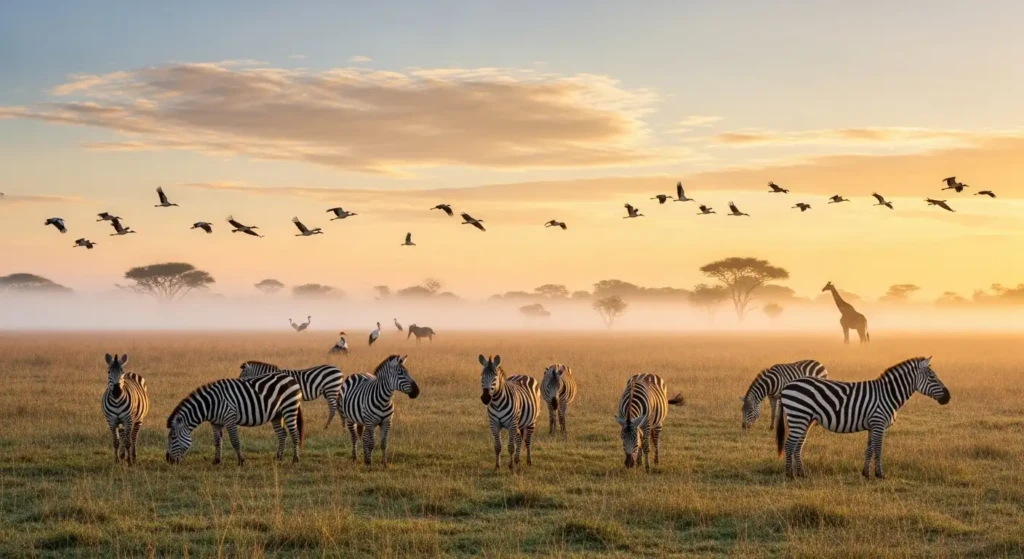
This article goes into detail about commensalism in the savanna, focusing on essential examples, its ecological importance, and how these interactions affect the behavior of animals.
What is Commensalism?
In a commensal relationship, one organism (the commensal) gets something good out of it, while the host does not get anything good or bad. The Latin word commensalis, which means “sharing a table,” is where this relationship comes from. It happens a lot in nature, especially in the savanna, where many different species live together.
Commensalism is a neutral but important relationship that helps biodiversity. It is different from mutualism (where both species gain) and parasitism (where one benefits at the other’s expense).
What Exactly Is Commensalism in the Savanna?
In ecology, commensalism is a relationship in which one species gains something and the other does not lose anything. Mutualism is a win-win situation: the acacia tree gives ants nectar to eat, while the ants protect the tree from giraffes that try to eat it. Parasitism is the darker cousin: ticks suck blood from buffalo, making them weaker while filling their bellies.
One partner—the commensal—gains something valuable: food, transport, or protection. The host, meanwhile, carries on as if nothing happened. The word itself comes from the Latin commensalis, “sharing a table.” Picture a dinner guest who never brings wine, never washes dishes, yet never offends the host. That is the spirit of commensalism in the savanna: unobtrusive, opportunistic, and surprisingly successful.
Examples of Commensalism in the Savanna
1. Oxpeckers and Grazing Animals
Oxpeckers are birds of the Buphagus genus that commonly sit on big animals like giraffes, buffaloes, and impalas. People used to think that they had a mutualistic connection (getting rid of parasites), but new research points to a more commensal one.
- Benefit to Oxpeckers: They feed on ticks, fleas, and even earwax or blood from wounds.
- Impact on Host: The host animal is unaffected primarily, though some oxpeckers may prolong wounds for feeding, blurring the line between commensalism and parasitism.
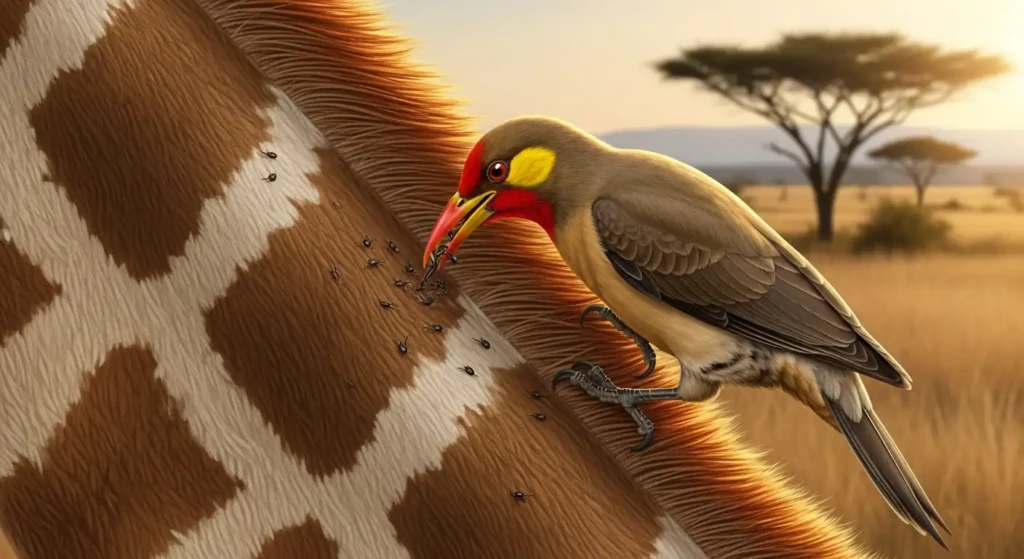
2. Cattle Egrets and Large Herbivores
Cattle egrets follow animals that eat grass, like buffalo, zebras, and wildebeest.
- Egrets get food from the insects that are disturbed by the movement of the herbivores.
- Effect on Host: The egrets don’t help or hurt the herbivores in any way, which is a classic example of commensalism.
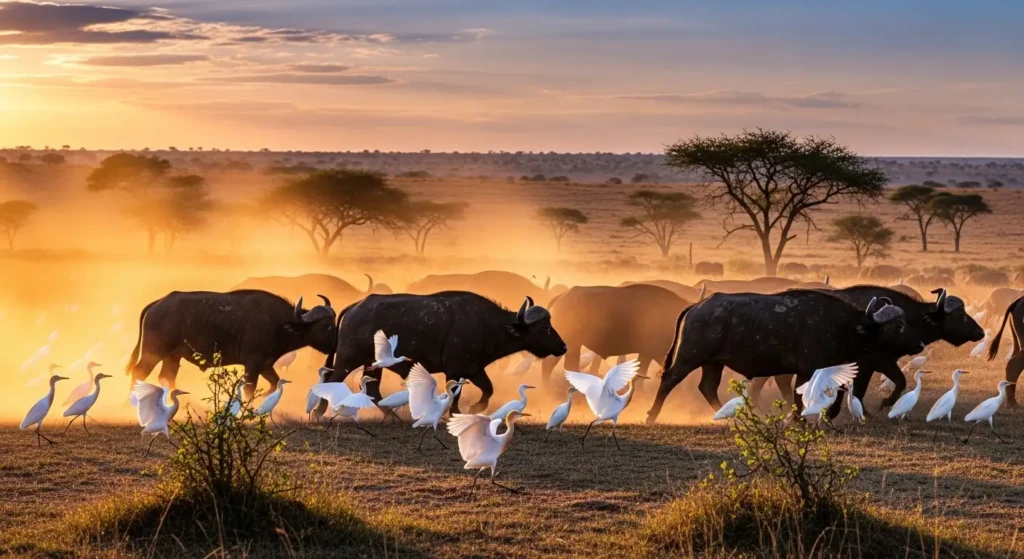
3. Vultures and Predators (Lions, Hyenas)
Vultures and scavengers, like jackals, follow apex predators.
- Vultures eat the remains of animals that lions or hyenas have killed.
- Effect on Predators: The predators don’t care about the scavengers; their existence doesn’t aid or hurt them.
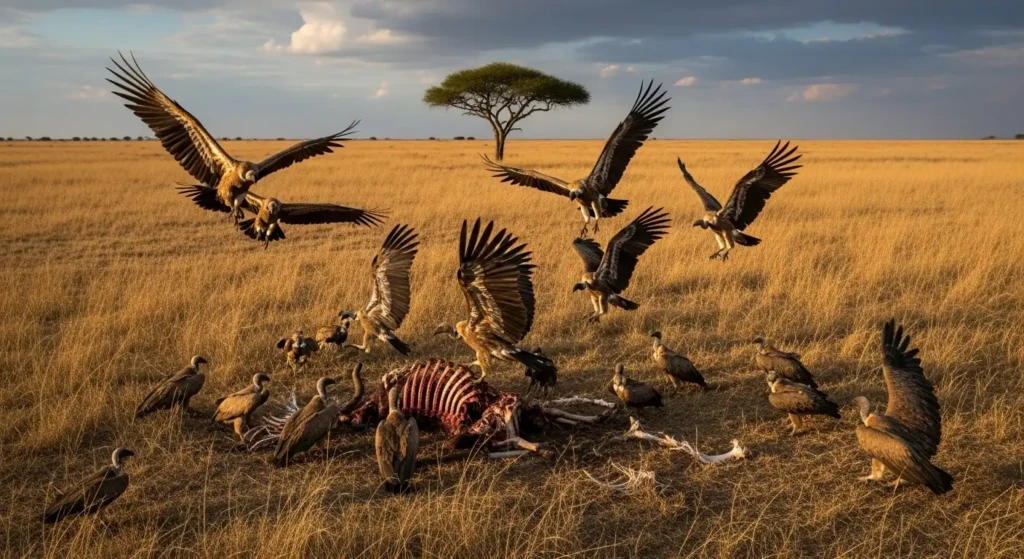
4. Birds and Elephants
Some birds, like oxpeckers and other small birds, sit on elephants.
- Birds get safety from predators and access to insects on the elephant’s skin.
- Effect on Elephants: The elephants are mostly fine unless the birds peck at their wounds.
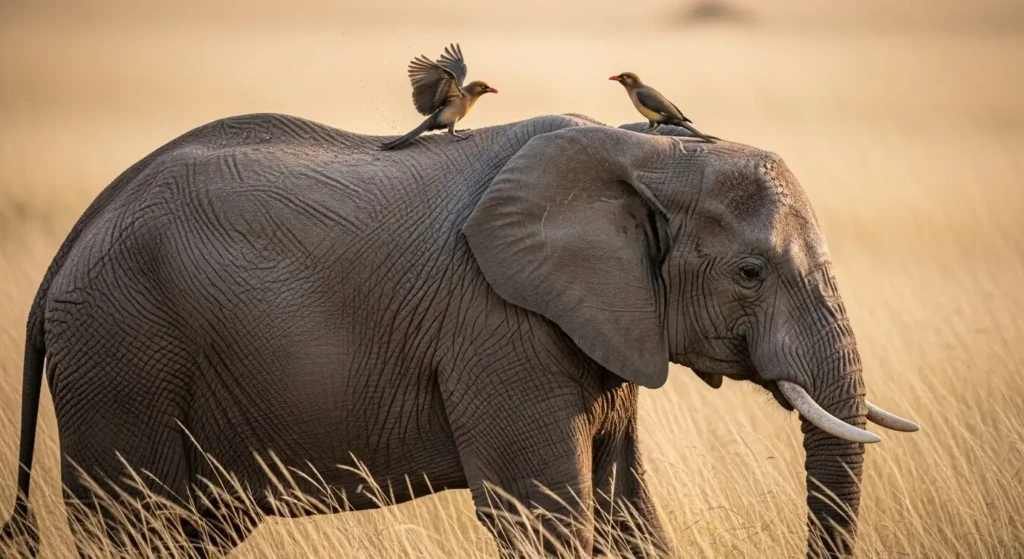
5. Arctic Fox and Caribou
While this example is from the tundra, similar dynamics occur in savannas where smaller animals follow larger grazers.
- Fox gets food from lichens and insects that caribou disturb.
- Effects on Caribou: The fox’s presence does not harm the caribou.
6. Termites and Gecko Lodgers
Old termite mounds dot the savanna like miniature castles. Once abandoned, these earthen fortresses become prime real estate for geckos and small snakes. The reptiles gain a climate-controlled refuge insulated from the blistering midday sun. The termites, having long since relocated, suffer no consequence.
Ecological Importance of Commensalism in the Savanna
1. Enhances Biodiversity
Commensal interactions help many species live together without fighting, which makes ecosystems more stable.
2. Supports Food Chains
Commensals like vultures and egrets help recycle nutrients by eating leftover food or insects that have been disturbed.
3. Behavioral Adaptations
Many animals change their behavior to take advantage of commensal connections. For example, birds follow herds to find convenient places to eat.
4. Indicator of Ecosystem Health
The existence of commensal species, like oxpeckers, is an indicator that the predator-prey relationship is in balance.
Commensalism vs. Mutualism and Parasitism
| Relationship Type | Species A | Species B | Example in Savanna |
|---|---|---|---|
| Commensalism | Benefits | Unaffected | Cattle egrets & buffalo |
| Mutualism | Benefits | Benefits | Clownfish & sea anemone |
| Parasitism | Benefits | Harmed | Ticks on giraffes |
Understanding these distinctions helps ecologists study species interactions more accurately.
Final Thoughts
Commensalism in the savanna is an essential yet subtle ecological relationship that helps biodiversity without hurting the host species. These interactions, like oxpeckers on buffalo and vultures following lions, show how delicate nature’s equilibrium is. We learn more about how ecosystems work and the fragile web of life in the savanna by researching commensalism.
If you want to see these interactions for yourself, safaris in Africa’s Serengeti or Botswana are great places to do so.
References
- Kasper D. L. (2009). A paradigm for commensalism: the role of a specific microbial polysaccharide in health and disease. Nestle Nutrition workshop series. Paediatric programme, 64, 1–257.
- Mougi A. (2016). The roles of amensalistic and commensalistic interactions in large ecological network stability. Scientific reports, 6, 29929.
